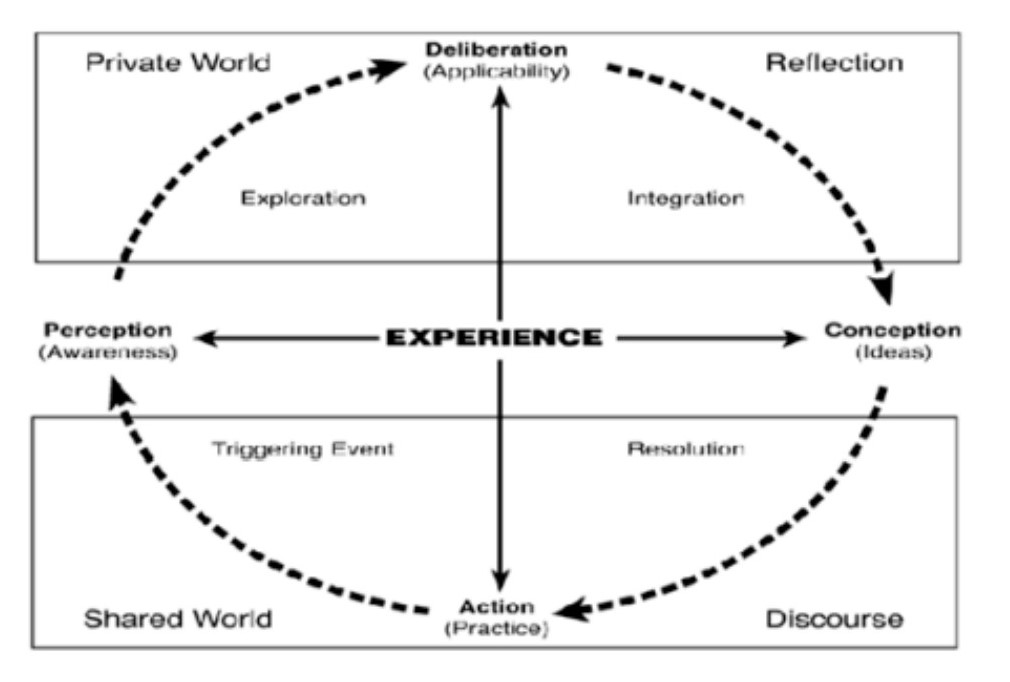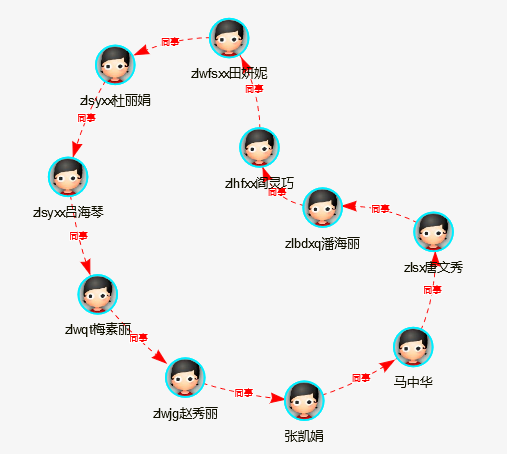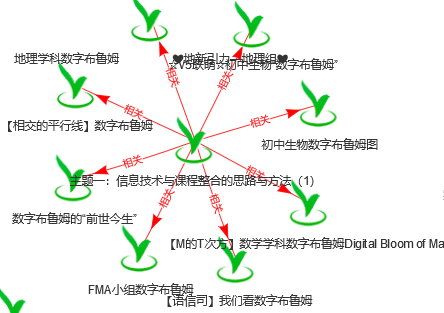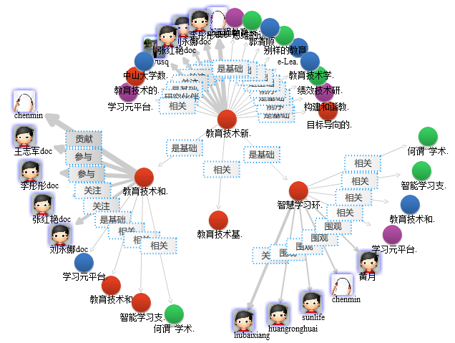-
在线学习设计:社区设计的理论与方法
普通类 -
- 支持
- 批判
- 提问
- 解释
- 补充
- 删除
-
-
Introduction
-
One of the most widely used frameworks for building communities online is the Community of Inquiry (CoI) theoretical framework developed by Garrison, Anderson, and Archer (2000). Applying the CoI framework as a lens, the purpose of this article is to provide a collection of CoI instructional strategies based in cognitive presence, social presence, and teaching presence (Garrison, Anderson, & Archer, 2000), for practitioners (instructors, online course developers, instructional designers) to use in online courses. This collection of CoI instructional strategies is built using Sorensen and Baylen’s (2009) seven principles of good practice. Garrison and Arbaugh (2007) indicated the need for practical strategies and guidelines for how to facilitate presence from a real-world pedagogical perspective as a future area for CoI research. This article hopes to fill this void.
-
Community and CoI Framework
-
History of CoI
Grounded in John Dewey’s (1938) view of practical inquiry, Garrison et al. first introduced the Community of Inquiry (CoI framework) in 2000 (as cited in Swan & Ice, 2010). With inquiry and community at the core of his philosophy, Dewey believed individual development was dependent upon community (Swan, Garrison, & Richardson, 2009). “Community,” a word used copiously in educational research, is often used to refer to the cognitive or emotional connections established between physically separated learners. A broad construct of community has been defined by McMillan and Chavis (1986) as “a feeling that members have of belonging, a feeling that members matter to one another and to the group, and a shared faith that members’ needs will be met through their commitment to be together” (p. 9). Wang, Laffey, and Poole (2001) argue that community can result from shared knowledge among online learners, and this online community is especially important as Rovai (2000) stated, “strong feelings of community increase the flow of information, the availability of support, commitment to group goals, cooperation among members, and satisfaction with group efforts” (p. 286).
-
CoI in Online Learning Environments
-
The literature specifically advocates that within online environments, interaction between learners is of great importance to student success (Akyol & Garrison, 2008; Arbaugh, 2008; Richardson, Maeda, Lv, & Caskurlu, 2017). The CoI framework that highlights three core elements –cognitive presence, social presence, and teaching presence – is used to create a meaningful educational experience (Garrison et al., 2000). These presences are interdependent as depicted in Figure 1. The CoI framework assumes that effective online learning, particularly higher order learning, is dependent on the development of a community (Swan et al., 2009). Since its publication in 2000, researchers have suggested additions to the original framework in terms of presences, dimensions, and influences (Kozan & Caskurlu, 2018; Peacock & Cowan, 2016). This article will focus on three original presences as defined by Garrison et al. (2000). For additions to the CoI framework, refer to Kozan and Caskurlu (2018) and Peacock and Cowan (2016). The three presences of the CoI framerwork as discussed in this article are multidimensional, but in order to understand how they work collectively we must examine them individuall.
-
Framework

-
Cognitive Presence
-
Cognitive presence, the ability to construct and confirm meaning through sustained reflection (Anderson, Rourke, Garrison, & Archer, 2001), is demonstrated in the Practical Inquiry Model (PIM) created by Garrison et al. (2000) and depicted in Figure 2. The PIM includes four phases: (1) a triggering event, where a problem is identified for further inquiry; (2) exploration, where an individual explores the issue; (3) integration, where learners concept meaning from ideas formed in the exploration phase; and (4) resolution, where students can apply the new skills and knowledge learned from the previous phases into real-world application(s) (Garrison et al., 2000). Reflection is a key aspect of the CoI framework and helps learners to increase their cognitive presence as Redmond (2014) states, “reflecting on learning content and outcomes relates to knowledge acquisition where learners identify their increased knowledge and skills in the subject area” (p. 50).
-
Practical inquiry model of Cognitive Presence

-
Social Presence
-
According to Lowenthal and Lowenthal (2010), “social presence is a theory that explains the ability of people to present themselves as ‘real people’ through a communication medium. Most studies on social presence focus on how students present themselves and/or are perceived as ‘real’ people online” (p. 1). Garrison et al. (2000) determined three categories of social presence indicators. These categories are: (1) emotional (affective) expression, where learners share personal expressions and values; (2) open communication, where learners develop aspects of mutual awareness and recognition; and (3) group cohesion, where learners build and sustain a sense of group commitment (Garrison et al., 2000). A study conducted by Richardson and Swan (2003) found that social presence positively affects student and instructor course satisfaction. During the study, a relationship between social presence and perceived learning was identified; students who perceived high social presence learned more than those who perceived low social presence (Richardson & Swan, 2003).
-
Teaching Presence
-
Garrison and colleagues describe teaching presence as the design, facilitation, and direction of cognitive and social processes to support learning (Garrison & Arbaugh, 2007; Garrison et al., 2000). Teaching presence has three components: (1) instructional design and organization (e.g., setting curriculum, designing methods, etc.); (2) facilitating discourse (e.g., setting course climate, acknowledging or reinforcing student contributions, etc.); and (3) direct instruction (e.g., summarizing the discussion, presenting content/questions, etc.; Anderson et al., 2001).
-
结合自己的在线学习实践,说说你对COI的理解
-
如何增强在线学习中的存在感?
活动类型:反思活动活动名称:如何增强在线学习中的存在感?活动描述:1. 结合自身的学习体验,选择如钉钉平台,腾讯会议,ZOOM,MOODLE,SAKAI,慕课等分析其如何体现教学存在,认知存在和社会存在的? 2. 上述平台的COI的理念以及可能的改进措施; 3 .小组协同,优秀成果可策展!-
COI与学习环境的比较分析
活动类型:讨论交流活动名称:COI与学习环境的比较分析活动描述:假设你是某大学二年级的学生,正在学习教育技术新发展这门课程,这门课程的主要特色为混合学习,即线上线下混合学习方式进行。现在基于平台界面除过学习内容和学习活动显示外,你可以选择一种网络环境辅助学习,那么你会选择那种?为什么?结合COI论述,包括分析其对学习的支持与你的需求-
PS:三种网络环境如下所示:



-
分享COI的最新成果
-
同伴互评
活动类型:社会化批阅活动名称:同伴互评活动描述:请结合同学的讲解和作品。对其作业进行同伴评价,相关标准可参考: 1)文献的权威性与前沿性: 2)文献的启发性与逻辑性; 3. 文献梳理的规范性与创新性; 4)作品的易读性和学习体验; 5)该作业所付出的心智努力等... -
-
- 标签:
-
加入的知识群:

.jpg)

学习元评论 (0条)
聪明如你,不妨在这 发表你的看法与心得 ~